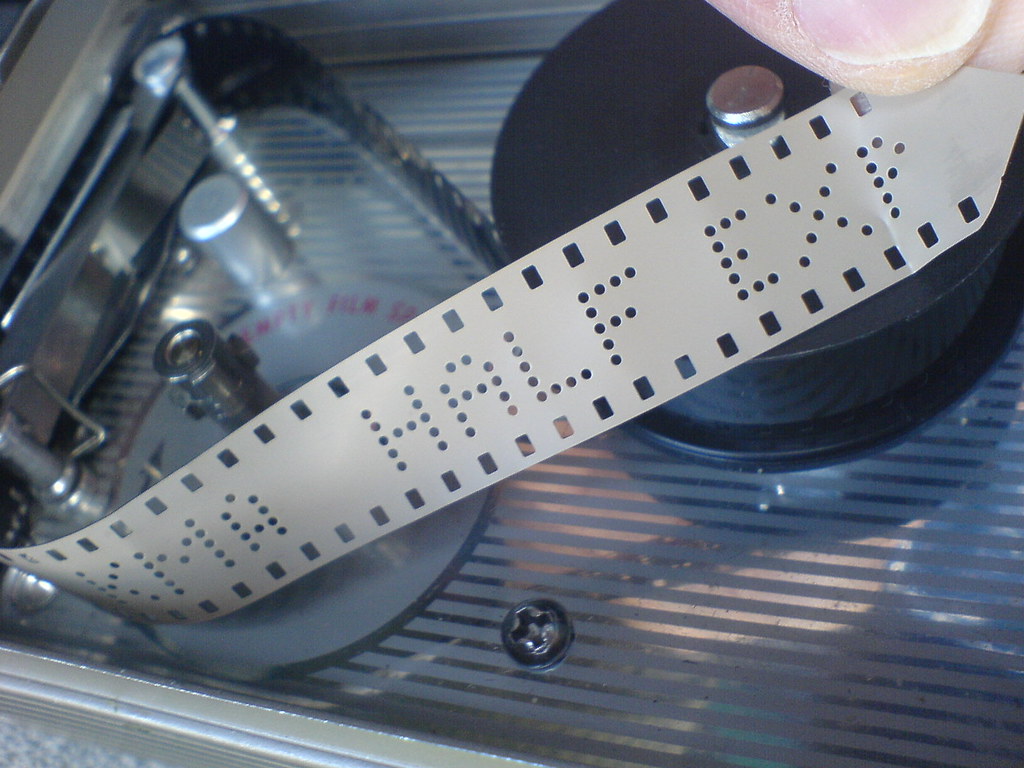
When it comes to the media we create and consume, the formats we use are just as important as the content itself. Over the decades, video technology has relentlessly evolved, constantly morphing to meet our changing needs. But with progress comes obsolescence, and many formats once cutting-edge have been relegated to the ‘scrap heap of history.’ These are the relics of a bygone era—video formats that, for one reason or another, have faded into obscurity.
Before digital streaming and high-definition clarity, these technologies were the height of innovation. They shaped how we watched movies, recorded memories, and shared stories. As newer, sleeker options emerged, these old-school formats were inevitably left behind. It’s a powerful reminder of how quickly technology moves, and how even revolutionary formats can become outdated in the blink of an eye. So, prepare for a journey back in time! We’re diving deep into the fascinating stories of classic film and video formats that, despite their groundbreaking contributions, have vanished from our screens. Let’s reminisce about the tech that once ruled our living rooms, and understand why they eventually had to say goodbye.

1. **VHS (Video Home System)**
When it comes to outdated video formats, VHS tapes are often the first thing that comes to mind. Seriously, when they debuted in the 1970s, few could have predicted just how much they would revolutionize the way we consume media—and even how movies are made. Before VHS, the very idea of watching a full-length movie in your living room, let alone owning a copy, seemed like pure science fiction. But suddenly, it became an undeniable reality.
By the 1980s, the home video market absolutely exploded. Video rental stores popped up everywhere, becoming a staple of neighborhoods and shopping centers. This trend continued well into the 1990s, with many films finding a second life—and a crucial second wave of revenue—through VHS releases. The format also empowered independent filmmakers, giving them a vital way to bypass big studios and distribute their work directly to eager audiences, democratizing access in a huge way.
But like all good things, the era of VHS eventually came to an end. DVDs and on-demand streaming quickly took over, offering not just better quality but unmatched convenience. Today, VHS tapes are mostly a nostalgic relic, fondly remembered by those who truly miss the simplicity of popping in a tape and, let’s be real, dutifully rewinding it before returning it to the video store. It’s a potent reminder of how far we’ve come—and how quickly technology can completely change the way we experience the world.

2. **Betamax**
Whenever something becomes a hit, there’s always a rival waiting in the wings, ready to challenge its dominance. Think about the classic showdowns: Apple vs. Samsung, Coca-Cola vs. Pepsi, or, in the thrilling world of video formats, the legendary battle of VHS vs. Betamax. For a significant period, these two formats were locked in a fierce, winner-take-all struggle for supremacy, each vying to become the undisputed standard for home video.
Betamax, launched by Sony in 1975, hit the market just a year before VHS. It proudly boasted superior video and audio quality, and by the early 1980s, it had indeed carved out a significant share of the booming videocassette market. But despite its clear technical advantages, Betamax harbored one major flaw that ultimately sealed its fate: it simply couldn’t match VHS when it came to recording time. VHS tapes could hold more content, a seemingly small detail that made them far more appealing to everyday consumers and amateur filmmakers eager to capture longer events.
Another critical factor in VHS’s favor was its open licensing model. While Betamax was exclusively controlled by Sony, VHS wisely allowed other companies to produce their own tapes and players. This led to wider availability and, crucially, lower prices. To make matters worse for Betamax, major film studios began strategically releasing their movies exclusively on VHS, effectively sealing its doom. By 1993, Sony finally ‘threw in the towel,’ discontinuing Betamax and bringing a definitive end to the format war. It’s a classic tale of innovation, intense competition, and the wonderfully unpredictable nature of technology.
Read more about: From Broadway to Box Office: An In-Depth Look at John Huston’s Ambitious 1982 Film Adaptation of ‘Annie’

3. **Video8/Hi8**
Sticking with Sony for another entry, let’s chat about yet another one of their video formats that, while once popular, has now gracefully bowed out: specifically, Video8, and its later iteration, Hi8. It’s truly incredible how much the concept of home movies has evolved over the past few decades, constantly improving in terms of technology and sheer user convenience. Long before you could whip out your iPhone to capture your child’s first tentative steps or immortalize a chaotic family reunion, you absolutely needed a dedicated consumer-grade camcorder to get the job done.
Video8 entered the picture billed as a compact and affordable option for the average consumer to capture life events on video. It was promoted for having a convenient size, a big plus for portability, as well as its impressive video quality, both of which were genuinely superior to many other formats floating around at the time. The format stuck around for a good while following its introduction in the late 1980s and early 1990s, becoming a staple for many. But eventually, like so many analog technologies, it began a steady decline.
Sadly, Video8, along with its successor Hi8, just couldn’t keep up with the meteoric rise of MiniDV and other rapidly evolving digital recording formats. The fundamental shift from analog to digital simply made things demonstrably easier for video consumers, offering far more convenience and a noticeable leap in overall quality. Unsurprisingly, by the early 2000s, Sony had discontinued the production of Video8/Hi8 camcorders, officially making the format defunct. It’s a testament to how shifting consumer preferences and technological leaps dictate the market.
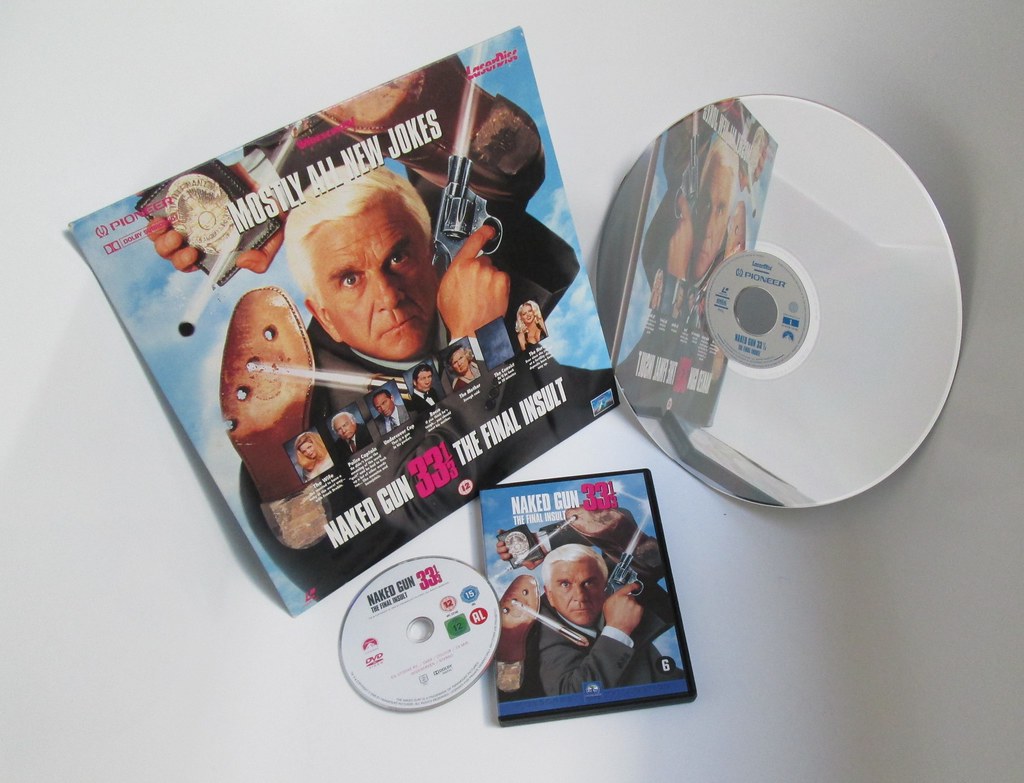
4. **LaserDisc**
When it comes to disc-based video formats, the first ones people usually think of are DVDs, often completely forgetting their magnificent original predecessor. That, my friends, would be LaserDisc, originally released in 1978 and heavily advertised as the next groundbreaking leap forward in home media technology. It was, in its time, truly a marvel.
The format itself was visually striking, resembling a DVD but with the substantial size of a classic vinyl record, and it required a special LaserDisc player to watch its content. This larger size wasn’t just for aesthetics; it allowed for immensely superior video and audio quality when compared to VHS, and, crucially, enabled additional bonus features and director’s commentary tracks—features we now take for granted. These innovations made LaserDisc a cherished favorite of avid collectors and discerning cinephiles of the 1990s, who always sought the best possible version of their beloved films. However, while the format boasted many advantages, its inherent shortcomings were simply too great to ignore, ultimately leading to its demise.
Unlike VHS tapes, the sheer, cumbersome size of LaserDiscs made them rather awkward to store and incredibly easy to damage. Adding to the user friction, much like a vinyl record, if you were deep into a particularly long movie, you’d have to physically take the disc out and flip it over. All of these operational challenges, plus the decidedly heftier price tag attached to both players and discs, resulted in LaserDisc remaining a niche product, never quite able to replace VHS in mainstream homes. Nowadays, LaserDiscs are primarily remembered only by hardcore video format collectors and by those utterly entranced by the wonderfully odd technological relics of past decades.
Read more about: The Nostalgia Mystery: Unearthing 15 Arcade Games That Vanished From Shopping Malls
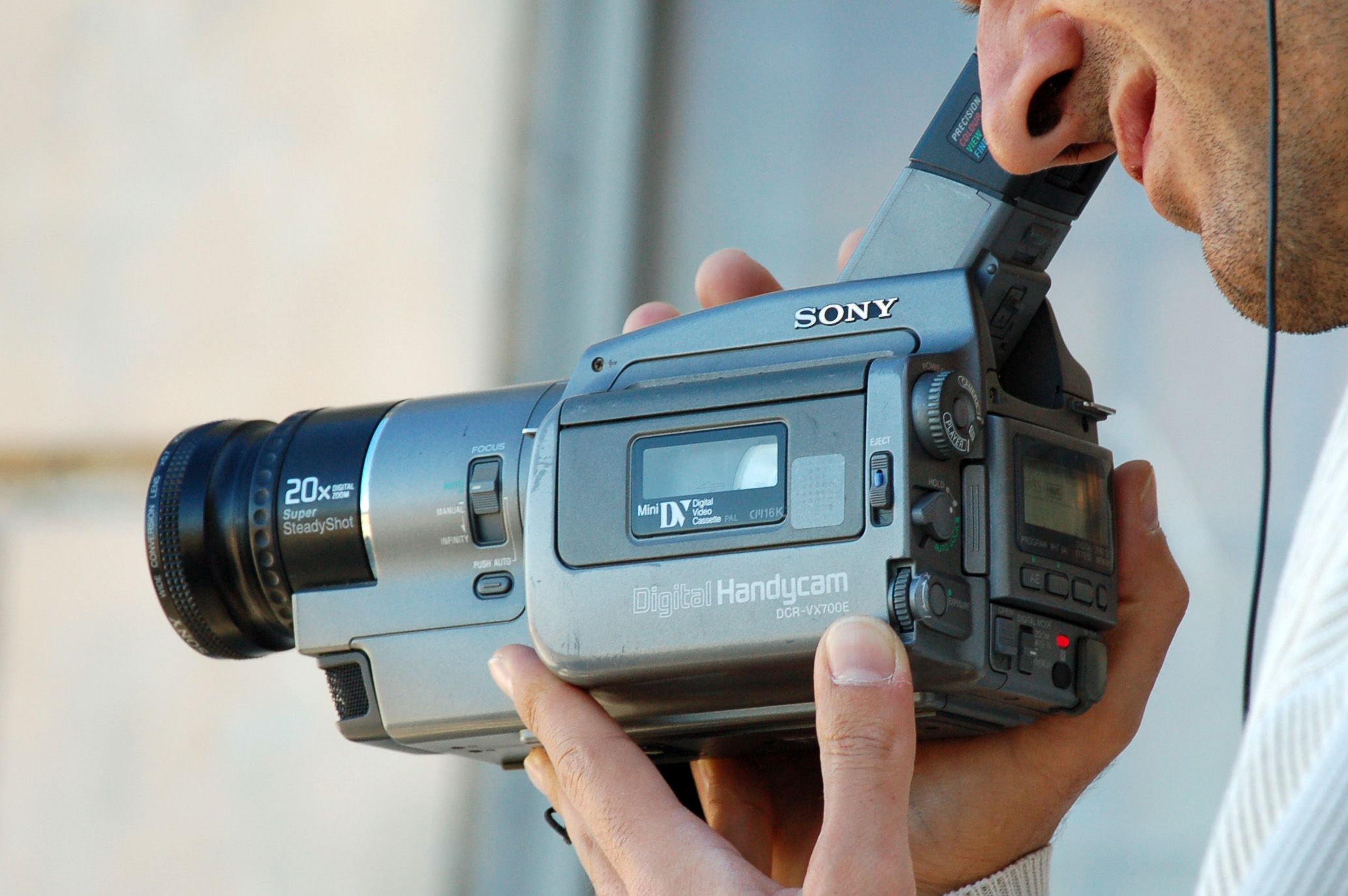
5. **MiniDV**
In the late 1990s and early 2000s, MiniDV tapes were, without a doubt, the undisputed kings of the video world. These incredibly compact tapes, loaded into dedicated camcorders, were essentially the video equivalent of audio cassettes—small, portable, and absolutely perfect for capturing life’s spontaneous moments. Loved by amateur videographers, indie filmmakers, and diligent journalists alike, MiniDV was widely praised for its surprisingly sharp image quality and commendable affordability. For a good while, it genuinely seemed like everyone had a MiniDV camcorder tucked away, ready to record.
The early 2000s marked the undeniable golden age of MiniDV. It was the go-to format for nearly everything, from documenting memorable family vacations to powering ambitious independent film projects. One of its biggest selling points, a true game-changer, was its seamless compatibility with home computers, making it incredibly easy to transfer footage and dive into the exciting, then-new realm of digital editing. If you ever rummage through old boxes today, you’ll probably stumble across a few dusty MiniDV tapes, silent relics of a time when they were utterly indispensable.
But as technology advanced relentlessly, MiniDV’s reign inevitably came to an end. The meteoric rise of smartphones with increasingly capable built-in cameras, like the revolutionary iPhone, made it completely unnecessary to buy tapes or carry a separate camcorder. Simultaneously, more modern, dedicated cameras began a decisive pivot towards using SD cards, which could store far more footage than MiniDV tapes ever could. By the mid-2000s, MiniDV’s popularity had plummeted dramatically, and by the 2010s, the format was officially, and sadly, obsolete. It’s a compelling story of innovation and rapid obsolescence, a powerful reminder of how quickly technology can reshape the way we capture and share our lives.

6. **VCD (Video CD)**
It should be abundantly clear by now that the 1990s was a truly pivotal time for the home video market, especially as digital formats began their rapid ascent, quickly replacing analog ones. Various companies were in a frantic race to develop the format that would eventually unseat VHS tapes as the dominant player, leading to some absolutely fascinating technological developments. We’ve already mentioned the dramatic rise and fall of LaserDiscs, but around that same period, there was another disc-based format trying to break through: the Video CD, or VCD.
Video CD, also known as VCD, made its debut in the early 1990s and could hold up to 74 minutes of video and audio. The format achieved solid success, particularly in Asia, largely due to its compelling affordability and crucial compatibility with most existing CD players. This made it an accessible option for many. The VCD format also proved to be a perfect, efficient way to distribute the music videos of various solo and group performers, further cementing its regional popularity.
However, once DVDs made their grand entrance, the days of the VCD quickly became numbered, and for a litany of compelling reasons. While VCDs could only fit a maximum of 74 minutes of content, DVDs could hold significantly more, often entire feature films, while also boasting vastly superior audio-visual quality. Although the format lingered for a while, particularly in Asia, the relentless advent of DVDs, followed by Blu-Ray discs, and finally, the unstoppable march of online streaming, proved to be the ultimate, final nail in the coffin for VCDs.

7. **D-VHS (Digital VHS)**
A big trend we’ve seen on this list has been formats that bravely failed in their pursuit of defeating and dethroning VHS tapes as the dominant video format. Digital VHS, or D-VHS, is another prime example of these earnest, yet ultimately unsuccessful, attempts. This particular product was built specifically to capitalize on the rapidly growing HDTV market, a forward-thinking move at the time. Its core promise was the ability to record HDTV broadcasts, and equally important, to showcase movies in their desired high quality. Unfortunately, this impressive trait proved critically insufficient almost as soon as DVDs, and later Blu-rays, hit the scene and utterly revolutionized the home video market.
Despite the best efforts of those brilliant minds behind it, D-VHS simply wasn’t able to keep up with the accelerating trajectory of the business and the ever-evolving tastes of consumers. DVDs, quite frankly, offered a demonstrably better package: superior video and sound quality, alongside the invaluable ability to store more content like engaging commentary tracks and appealing special bonus features. The advantages were simply too numerous to ignore for the average consumer.
To add to its woes, the glaring lack of movies readily available on D-VHS severely limited the format’s appeal. There was also the high cost of the D-VHS tapes themselves, coupled with the expensive video player, which made it incredibly difficult for the format to truly break through into mainstream success. One might speculate: had DVDs not emerged so powerfully at the end of the 90s, then D-VHS might indeed have had a stronger fighting chance for prolonged mainstream success. But, as we’ve learned, timing is everything.
Stepping beyond the home video giants we just reminisced about, our journey into the archives of obsolete media continues. This next batch of formats takes us into the professional realm, the intriguing world of niche experiments, and even some rather spectacular commercial misfires. Get ready to uncover the stories of technologies that promised to revolutionize how we capture and share, but ultimately couldn’t keep pace with innovation or shifting consumer desires.
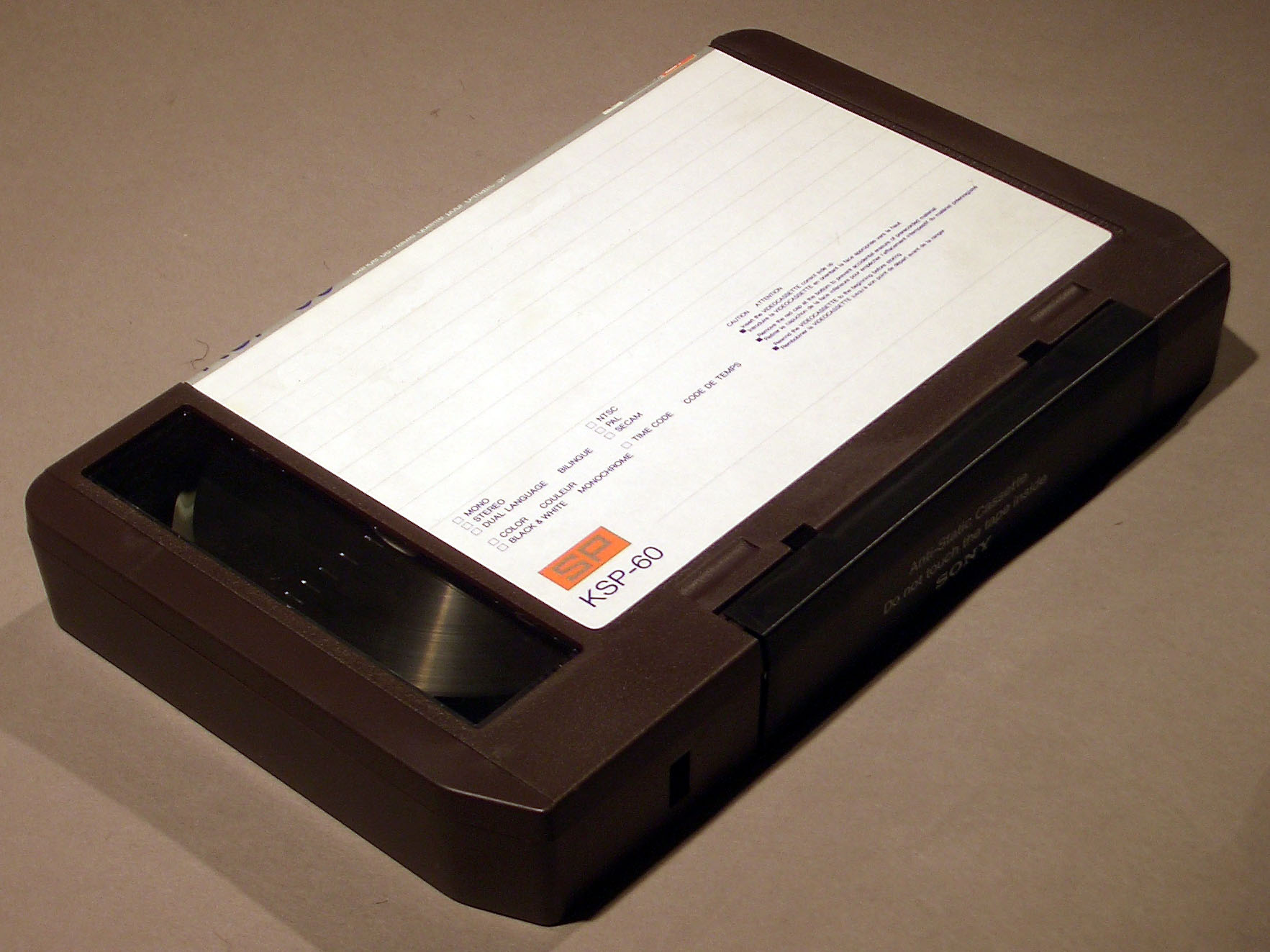
8. **U-matic**
Now, let’s shift our focus to the world of professional broadcasting and a largely forgotten video format: U-Matic. Introduced by Sony in the early 1970s, U-Matic tapes were genuinely a game-changer for video production, marking a significant step forward in how professionals handled moving images. It truly carved out its place in history.
With their high-quality video and surprisingly compact size for the era, these tapes quickly became the gold standard for television studios across the globe. The format was also incredibly user-friendly and worked seamlessly with the editing systems of the time, which was a huge bonus for streamlining often complex production workflows. U-Matic even played an intriguing role in filmmaking, with the raw cut of the iconic film *Apocalypse Now* famously preserved on these very tapes.
However, as the mid-1980s rolled around, U-Matic’s undisputed dominance began to wane. Newer, more advanced formats like Betacam, boasting superior picture quality, along with the sheer affordability of VHS for broader applications, started to take over the market. The writing, as they say, was on the wall.
By the time the 1990s were in full swing, U-Matic had largely faded into obscurity, no longer the go-to format for television production. Yet, its impact on professional video production can’t be overstated; it truly paved the way for many of the formats we use today, serving as a powerful reminder that even the most groundbreaking technology can eventually be replaced by something newer and shinier.

9. **DVCPRO**
Next up, we have Panasonic’s contribution to the professional video landscape: DVCPRO. This robust format made its debut in the mid-1990s, offering an impressive combination of high-quality video and audio recording in a sturdy tape format, instantly making it a highly desirable choice for those deeply entrenched in professional video production circles. It was truly built for serious work.
Following its introduction, DVCPRO quickly gained traction, with broadcasters, filmmakers, and a myriad of other production professionals adopting it, solidifying its status as an industry standard for quite some time. A major, often-praised advantage of this format was its ability to prevent audio drifting during recording, ensuring that sound and visuals would remain perfectly synced—a crucial detail for professional output. Its durable quality also made it an ideal companion for outdoor filming, especially for demanding field productions, such as covering fast-paced sports like football.
However, DVCPRO’s reign eventually faced significant competition in the form of rapidly evolving digital recording technologies, particularly Panasonic’s own P2 and Sony’s XDCAM. Both of these newcomers offered very enticing features that represented a true leap forward. They specifically benefited immensely from the advent of solid-state media, which, for the uninitiated, is a type of computer storage that stores data electronically without any moving parts.
This technological leap wasn’t just incremental; it led to both P2 and XDCAM boasting significantly faster workflows and much higher storage capacities, making them absolutely perfect for the increasingly fast-paced world of modern video production. Unsurprisingly, by the time the mid-2000s arrived, countless broadcasters and video production outlets had decisively pivoted away from tape-based formats like DVCPRO, thereby cementing its status as an obsolete, yet incredibly influential, piece of media history.

10. **8mm Film**
Our journey through the world of obsolete video formats now takes us on a fascinating trip all the way back to the 1930s with the invention of 8mm film. This wonderfully compact and user-friendly format, originally created by Eastman Kodak, quickly became the undisputed go-to choice for small productions and, more importantly, for countless families looking to capture and preserve their most cherished memories on film. It was the original home movie hero.
Over time, this beloved format evolved beautifully, giving rise to improved versions like Super 8mm, which brought with it even better sound and enhanced image quality. These updates made it an even more appealing option for documenting everything from joyful birthdays and memorable family vacations to the simple, yet profound, everyday moments that make up our lives. Bear in mind, this was long, long before the average person had a camera phone or even a disposable camera readily available in their pocket.
However, as we’ve learned repeatedly throughout this exploration, no format can truly remain on top forever, especially as technology relentlessly evolves and consumer demands constantly shift. The landscape was destined to change, and change it did.
Case in point, when revolutionary formats like VHS and the proliferation of consumer camcorders came into the picture during the 1980s and 1990s, formats like 8mm film quickly began their inevitable march toward obsolescence. It’s not hard to see why: VHS and other nascent formats simply offered far more convenience for users, coupled with noticeably higher audio-visual quality, all without the traditional film processing hassle. By the early 2000s, 8mm film was largely defunct in mainstream usage, surviving primarily in niche markets where filmmakers and artists specifically sought its unique, old-school aesthetic and charming vintage appeal.
Read more about: Your Essential Home Toolkit: 14 Must-Have Tools Every New Homeowner Needs for Smart Repairs

11. **CED (Capacitance Electronic Disc)**
When people think of video format flops, LaserDisc often springs to mind as an unwieldy, oversized disc that never quite broke through. But what if I told you there were competitors that met an even quieter, and arguably more spectacular, demise? Enter the Capacitance Electronic Disc, or CED, often known by its commercial name, Selectavision. RCA worked on this ambitious project from 1964 to 1984, finally releasing it to the public in 1981, hoping to stake its claim in the burgeoning home video market.
The CED was a truly fascinating, if ultimately flawed, concept. It encoded video onto a modified phonographic record, making it a unique analogue disc format. Like LaserDisc, it could store a relatively limited amount of video per side—typically 60 minutes. The innovative aspect was how the information was read: a record player-like stylus would fall into a video “groove” on the disc and latch on, using electronic pulses to transmit the images and audio. Unlike a traditional record player, you didn’t manually set the stylus; it frontloaded into the player, much like a CD or DVD.
From the very beginning, CED was envisioned as a relatively cheap format for the home market. However, despite this intention, RCA only managed to move a disappointing 100,000 units in its first year of release. The video quality, while average, wasn’t enough to sway consumers, and the discs themselves had a tendency to wear down more easily than their audio record counterparts. To add to the user friction, discs were loaded via a protective caddy and coated with a lubricant, making the whole process feel, well, a bit clunky.
The timing of its release was also incredibly unfortunate. The CED launched in 1981, smack dab in the middle of the fiercely competitive VHS or Beta wars, which were already dominating consumer attention and retail shelf space. While technologically intriguing—even drawing comparisons to concepts like the Voyager Golden Records for encoding images—CED was simply a less practical and more cumbersome format compared to the rising dominance of videotapes.
Ultimately, RCA sold a meager 550,000 Selectavision players over the course of three years before finally, and rather unceremoniously, discontinuing the ill-conceived format on April 4, 1984. It stands as a prime example of an innovative idea that just couldn’t find its footing in a rapidly changing technological landscape, leaving it as a high-profile attempt that simply failed to sell.

12. **DIVX**
Moving into the digital age, we encounter some truly unique, and frankly, puzzling experiments that tried to shake up the DVD market. One such attempt was DIVX (and no, we’re not talking about the MPEG-4 video codec of the same name!). Launched in 1998, this format was backed by electronics store giant Circuit City, and its core idea was to allow customers to “rent” movies without the hassle of returning them to a physical store.
Here’s how it worked: a DIVX disc, which cost about $5, would become useless 48 hours after you started playing it. Unless, of course, you decided to ‘buy’ or re-rent it using your internet-connected player. The catch? It required specialized hardware, meaning you couldn’t just pop a DIVX disc into your regular DVD player.
This specialized hardware requirement was a significant barrier to entry, and honestly, there wasn’t a clear, compelling reason for consumers to invest in a DIVX player over a standard DVD player. To make matters worse, DIVX discs often lacked the extra features that were becoming standard on retail DVDs, offering a less satisfying viewing experience.
The format was killed off just a year after its ambitious launch, with Circuit City reportedly losing a staggering $337 million on the project after taxes. While DIVX did predate the widespread rise of Netflix, its fundamental flaws and the lack of a clear value proposition sealed its doom, proving that not all innovations are destined for success.
Read more about: 5 Key Fashion Items to Elevate Your Style After 50
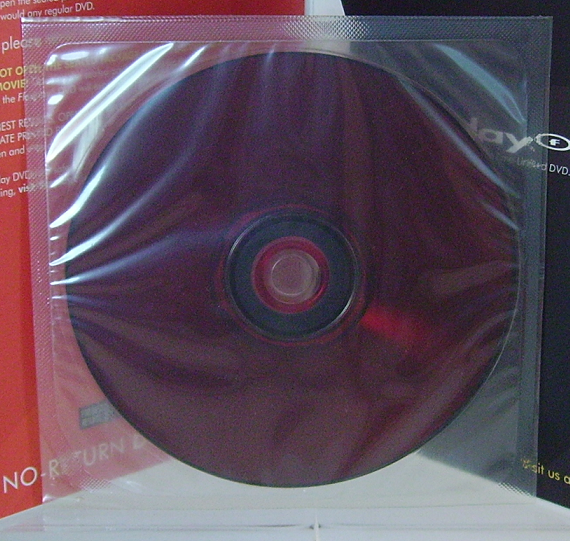
13. **Flexplay**
If DIVX sounded a bit outlandish, prepare for Flexplay. Launched in 2003, right in the midst of the DVD boom, Flexplay was another attempt to reinvent the movie rental wheel. Its big gimmick? These were self-destructing DVDs that had a built-in, limited lifespan. Once opened and exposed to oxygen, a Flexplay disc would literally change color and become unplayable after approximately 48 hours. Talk about planned obsolescence!
The one ‘pro’ for Flexplay was that it could be played in regular DVD players, eliminating the need for specialized hardware. However, the cons quickly piled up. Amidst growing public complaints about the environmental impact of these single-use, self-destructing discs, the company behind Flexplay eventually offered free return labels for recycling, which was a nice gesture but didn’t address the core problem.
Ultimately, Flexplay arrived years after DIVX, at a time when Netflix was already thriving with its mail-order DVD service, and kiosk-based rental services like Redbox were quickly gaining traction. In this competitive landscape, the idea of a self-destructing disc felt, as the context so aptly puts it, like a “pointless endeavor.” It was an interesting concept for a fleeting moment, but one that simply had no real place in the market.

14. **UMD (Universal Media Disc)**
Our final stop on this fascinating tour of vanished video formats brings us to a rather recent, yet surprisingly swift, departure: the Universal Media Disc, or UMD. Today, portable and mobile video viewing is absolutely ubiquitous; everyone has a smartphone, and younger generations, in particular, are glued to their handsets for content. But rewind to the early to mid-2000s, and it was a completely different world. The first iPod with video playback didn’t even hit the market until October 2005, and even then, its screen was tiny by today’s standards.
Earlier in 2005, however, a different portable device with a secondary focus on video playback made a big splash in retail stores: Sony’s original PlayStation Portable, or PSP. From the very jump, one of the key selling points for the PSP wasn’t just that it was a high-end portable gaming console, but also that it would have movies released for it on the same proprietary UMD format that housed the system’s games. It was a bold move to leverage its gaming hardware for multimedia consumption.
In the early weeks of the console’s existence, UMD movies actually did surprisingly well, showing real promise. Titles like “Resident Evil 2” and “House of Flying Daggers” each topped an impressive 100,000 units sold, demonstrating an initial appetite for portable physical video. This suggested that Sony might have been onto something groundbreaking.
However, despite this strong start, sales didn’t sustain themselves beyond the console’s first year on the market. A *Variety* report from February 2006 highlighted that outside of “comedies that appeal to the core young male gamer demo,” major studios were struggling to find an audience for UMD movie releases and began to pull back their support. Ultimately, UMD movies, much like the format itself, faded into the annals of tech history, a noble, but ultimately unsuccessful, attempt to bring physical portable video to the masses before streaming and smartphones completely redefined the landscape.
And there you have it, a captivating journey through the scrap heap of history, where once-revolutionary video formats now reside. From the titanic battles of the home video era to the audacious experiments in professional production and the quirky, often ill-fated, attempts to redefine how we consume media, each of these formats tells a unique story. They remind us of technology’s relentless march, the unpredictable nature of consumer preferences, and the sheer audacity of innovators daring to push the boundaries. While these formats may have vanished from our projectors and living rooms, their legacies live on, shaping the digital world we navigate today. It’s truly incredible how quickly the ‘next big thing’ can become a cherished relic, isn’t it?



